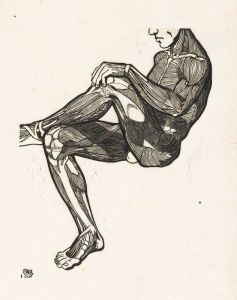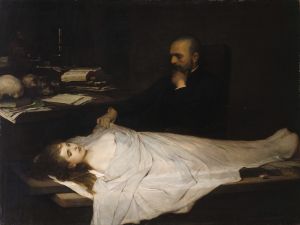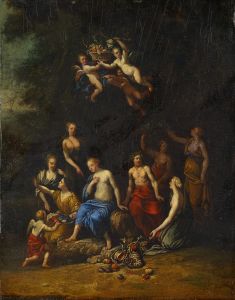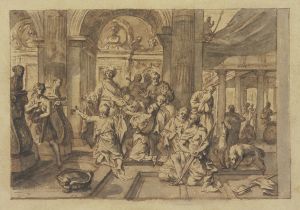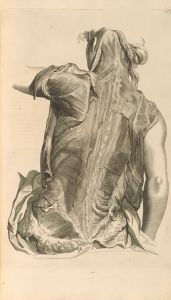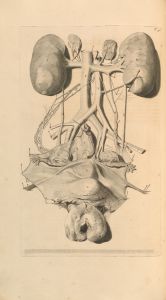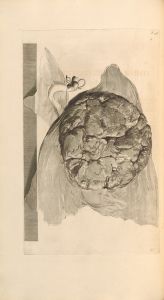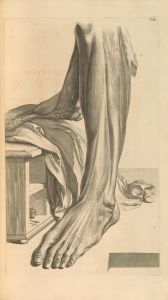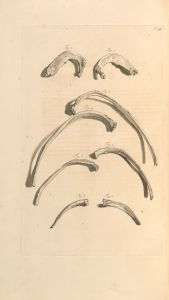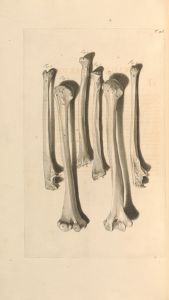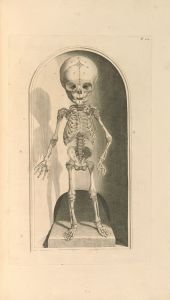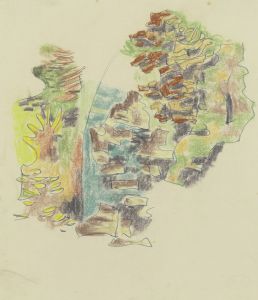
Anatomia humani corporis Pl.090
A hand-painted replica of Gerard de Lairesse’s masterpiece Anatomia humani corporis Pl.090, meticulously crafted by professional artists to capture the true essence of the original. Each piece is created with museum-quality canvas and rare mineral pigments, carefully painted by experienced artists with delicate brushstrokes and rich, layered colors to perfectly recreate the texture of the original artwork. Unlike machine-printed reproductions, this hand-painted version brings the painting to life, infused with the artist’s emotions and skill in every stroke. Whether for personal collection or home decoration, it instantly elevates the artistic atmosphere of any space.
"Anatomia humani corporis Pl.090" is an illustration by Gerard de Lairesse, a renowned Dutch Golden Age painter and art theorist. Born in Liège in 1640, de Lairesse moved to Amsterdam, where he became a prominent figure in the art world. His works are characterized by their classical themes and meticulous attention to detail, influenced by his study of classical antiquity and the works of earlier masters.
De Lairesse's "Anatomia humani corporis Pl.090" is part of a larger series of anatomical illustrations that were created for the book "Anatomia Humani Corporis," published in 1685. This book was authored by the Dutch anatomist Govard Bidloo, who was a contemporary of de Lairesse. Bidloo's work was one of the most detailed anatomical atlases of its time, and de Lairesse's illustrations played a crucial role in its success.
The illustration "Pl.090" depicts a detailed anatomical study of the human body, showcasing de Lairesse's skill in rendering the complexities of human anatomy with precision and artistic flair. The image is a testament to the collaboration between art and science during the 17th century, a period when anatomical studies were becoming increasingly important for medical education and understanding.
De Lairesse's contribution to "Anatomia Humani Corporis" is significant not only for its artistic merit but also for its scientific accuracy. His illustrations were based on dissections and observations, providing a realistic and detailed representation of the human body. This level of detail was unprecedented at the time and helped to advance the field of anatomy.
The collaboration between Bidloo and de Lairesse is an example of the interdisciplinary work that was common during the Dutch Golden Age. Artists and scientists often worked together to produce works that were both beautiful and informative. De Lairesse's illustrations for Bidloo's atlas are a prime example of this synergy, combining artistic skill with scientific knowledge to create a work that has endured for centuries.
In addition to his work on anatomical illustrations, Gerard de Lairesse was also known for his paintings and theoretical writings on art. His book "Groot Schilderboek" (The Great Book of Painting), published in 1707, was an influential treatise on art theory and practice. Despite losing his sight later in life, de Lairesse continued to contribute to the art world through his writings and teachings.
"Anatomia humani corporis Pl.090" remains an important historical artifact, reflecting the advancements in both art and science during the 17th century. It exemplifies the meticulous craftsmanship of Gerard de Lairesse and his ability to bridge the gap between artistic expression and scientific inquiry.





